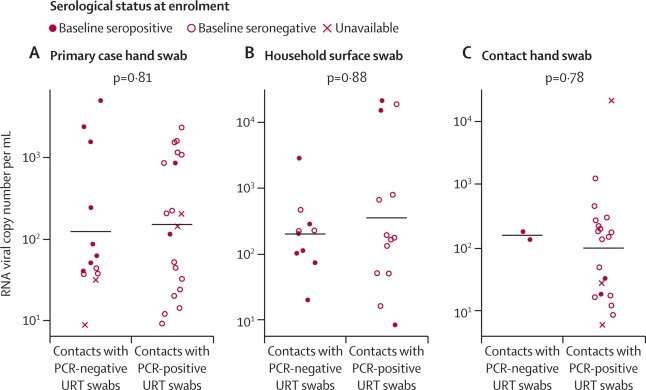Hand and surface viral load strongly correlated with COVID-19 infection risk in UK households

A National Heart and Lung Institute, Imperial College London study has confirmed that hands and surfaces could potentially transmit SARS-CoV-2 in a household setting. Published in The Lancet Microbe, the study, “Risk factors and vectors for SARS-CoV-2 household transmission: a prospective, longitudinal cohort study,” focused on pathways of physical and surface contact. Aerosol transmission was not investigated and was not in any way excluded as a means of transmission.
In the study, researchers recruited participants (contacts) who shared a household with newly diagnosed COVID-19 individuals (primary cases) in London, U.K. Frequent testing of upper respiratory tract swabs and blood samples were collected. Swabs were also taken from frequently touched household surfaces and primary cases’ and contacts’ hands to test for the presence of SARS-CoV-2 RNA.
Viral load samples of the upper respiratory tract from primary cases did not correlate with contacts’ risk of infection. Viral load in these samples did, however, predict their risk of having a SARS-CoV-2 PCR-positive hand swab, which in turn was associated with transmission to their respective contacts.
The results found that levels of SARS-CoV-2 RNA on primary cases’ and contacts’ hands and frequently-touched household surfaces were strongly correlated with contacts’ risk of infection, identifying these as potential vectors for the spread of COVID-19 within the households.
Timing is a significant obstacle in conducting viral research in the field (households in this case). Over the course of the study, SARS-CoV-2 RNA was detected on hands and surfaces, yet only one sample, a contact’s hand swab, was positive for viral culture. There were frequent SARS-CoV-2 RNA-positive detections by PCR back at the lab. However, the researchers report a 36–72 h interval to transport the swabs from participants’ homes to laboratory storage before they were subjected to in vitro cell culture. In this time frame, RNA degrades, and the encapsulated virus, while still detectible, is no longer functional.
Because the study took place in actual households and not in a lab setting, researchers could not systematically collect information on touch behaviors, hygiene practices or physical distancing. Lab settings are much more controlled environments, which is where previous studies have made determinations about how long SARS-CoV-2 RNA can persist on different surfaces. Because those previous studies were in controlled lab settings, they can tell us very little about what takes place in an actual household environment, which is why the current study is so informative.
The investigation covers the period when the pre-alpha lineages were dominant in London and continued until the alpha variant became dominant. The researchers point out that the results should not be extrapolated to more recent and more infectious variants.
Recent evidence cited in the paper suggests that the omicron variant BA.1 is significantly more stable on different surfaces and has an increased likelihood of aerosol transmission relative to earlier variants.
The authors state that study results “have practical implications and support interventions such as frequent handwashing, surface cleansing, physical distancing, reducing direct contact, and use of masks to curb transmission in households” in preventing COVID-19 transmission.
More information:
Nieves Derqui et al, Risk factors and vectors for SARS-CoV-2 household transmission: a prospective, longitudinal cohort study, The Lancet Microbe (2023). DOI: 10.1016/S2666-5247(23)00069-1
Journal information:
The Lancet Microbe
Source: Read Full Article
